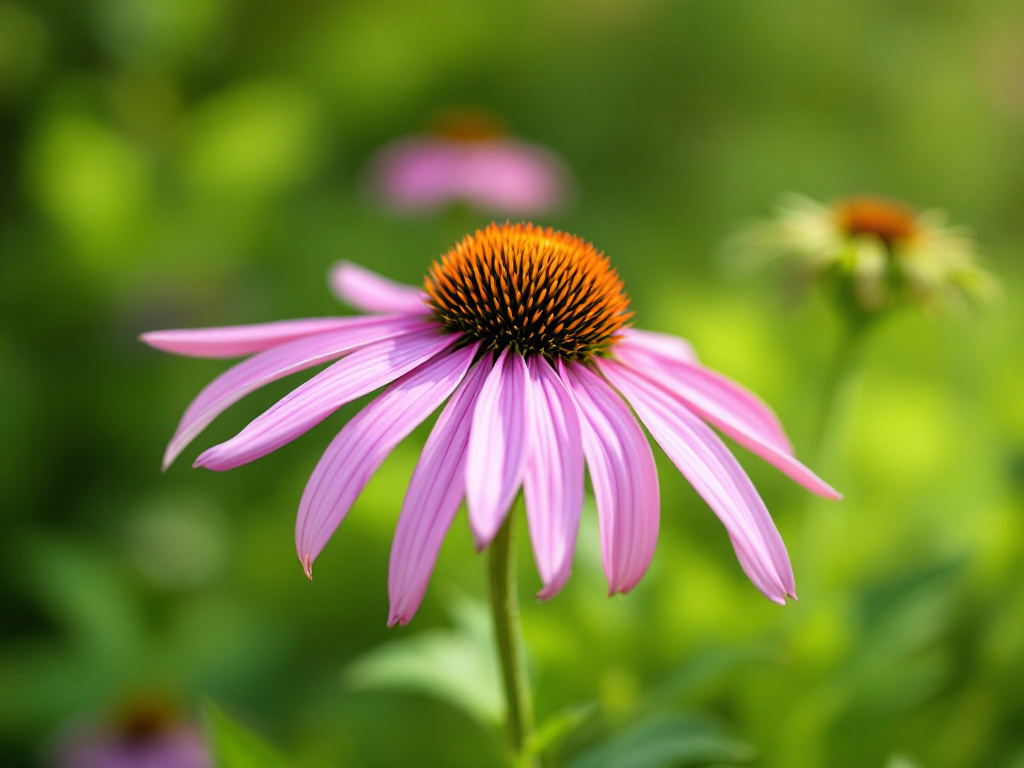Image generated by flux-ai.io & content generated by ChatGPT Version 4o-mini
Explore the Benefits of Purple Coneflowers in Hillsborough: Nature’s Resilient Beauty
In the heart of Hillsborough County, where agriculture thrives and gardens bloom, a remarkable plant is making waves among local gardeners and environmental enthusiasts: the purple coneflower, scientifically known as Echinacea purpurea. This vibrant flower is not just a pretty face; it plays a crucial role in our local ecosystem and offers a host of benefits for residents of our sunny Florida community.
What Is a Purple Coneflower?
The purple coneflower is a perennial plant that can grow between 2 to 4 feet tall, sporting stunning daisy-like blooms in shades of pink, lavender, and purple. With its strong, hairy stems, this plant stands tall against the winds and rains that can sweep through our area, particularly during hurricane season. In spring and summer, you’ll find these flowers lighting up gardens, parks, and natural areas throughout Hillsborough.
Why Should You Care?
For Hillsborough residents, adding purple coneflowers to your garden isn’t just about aesthetics. These flowers are excellent for attracting butterflies and other pollinators, which are essential for maintaining healthy ecosystems. As many local farmers and gardeners know, pollinators like bees and butterflies help fertilize plants, leading to better crop yields and more vibrant gardens. Enhancing the local pollinator population can benefit both agricultural outputs and the beauty of our communities.
Easy to Grow and Maintain
One of the best things about purple coneflowers is their adaptability. They can thrive in various soil types, from well-drained sandy soils to clay, making them perfect for many gardens in Hillsborough. These flowers prefer part shade to full sun, but they do particularly well in areas that offer some shelter from the afternoon sun. This resilience means they require less water than many other plants, making them a smart choice for homes looking to conserve water, especially during Florida’s dry spells.
Health Benefits and Uses
Historically, the roots of purple coneflowers have been used in traditional medicine for various ailments, including treating skin issues and even more serious conditions. While it’s important to consult with healthcare professionals before using any plant medicinally, knowing that this flower has a rich history of use adds to its charm. Plus, the flowers can be harvested for cut arrangements, bringing a splash of color indoors.
A Cautionary Note
While purple coneflowers are generally hardy, they can face threats from pests like the sweet potato whitefly and Japanese beetles. Implementing Integrated Pest Management (IPM) strategies, such as monitoring, removing affected leaves, and encouraging natural predators, can help reduce these issues. Regularly dividing your coneflowers every few years will also encourage more blooms and keep the plants healthy.
Get Involved!
If you’re interested in gardening or simply want to beautify your yard, consider planting purple coneflowers. Not only will you enjoy their stunning blooms, but you’ll also contribute to the local ecosystem and support our pollinators. Local garden centers may have these plants in stock, or you can connect with fellow gardeners in the community to learn more about propagation and care.
In conclusion, purple coneflowers are more than just vibrant additions to your garden; they represent a fantastic opportunity for Hillsborough residents to engage with and support our local environment. By planting these resilient flowers, you can help nurture the beauty of our community while fostering a thriving ecosystem right in your backyard. So why not grab a few coneflowers for your garden this season? Your flowers, local wildlife, and neighbors will thank you!
References
FPS192/FP192: Echinacea purpurea Purple Coneflower. (n.d.). Ask IFAS – Powered by EDIS. https://edis.ifas.ufl.edu/publication/FP192

